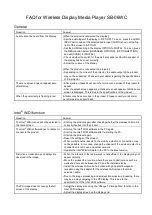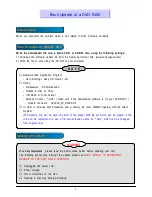
7
3. Replace the cover, or install addi-
tional batteries for primary power
as described in “Internal Battery
Power.”
To check the back-up batteries’ power
level, disconnect the receiver from the
primary-power source. Then look at
the receiver’s display. If it is dim, re-
place the back-up batteries.
CONNECTING TO
PRIMARY POWER
You can power the receiver from inter-
nal batteries, standard AC power, or
your vehicle’s battery.
Internal Battery Power
Your receiver uses four D batteries.
For the best performance, we recom-
mend alkaline batteries, such as Radio
Shack Cat. No. 23-550.
Follow these steps to install batteries
for use as the primary power source.
1. Remove the battery compart-
ment’s cover by pushing the cover
in the direction of the arrow.
2. Slide four D batteries into the
compartment, according to the
polarity symbols (+ and –) marked
next to the compartment. For easy
removal, place the batteries on
top of the lift-out ribbon.
3. Replace the cover.
To check the primary-power batteries,
turn off the receiver. The battery pow-
er indicator appears on the display for
several seconds. Fresh batteries
show a power level of 7. If the indica-
tor shows a power level of 2 or below,
replace the primary-power batteries.
Note: If you press
RADIO POWER
to
turn on the receiver when the primary-
power batteries are dead,
E
flashes on
the display if back-up batteries are in-
stalled.
AC Power
With an optional AC adapter, such as
Radio Shack Cat. No. 273-1664, you
can power the receiver from standard
AC power.
Caution: You must use an AC adapter
that supplies 6 volts with the center tip
set to negative. It must deliver at least
400 milliamps, and its plug must prop-
erly fit the receiver’s
DC IN 6V
jack. Us-
ing an adapter that does not meet
these specifications could damage the
20-219.fm Page 7 Wednesday, August 4, 1999 9:23 AM








































